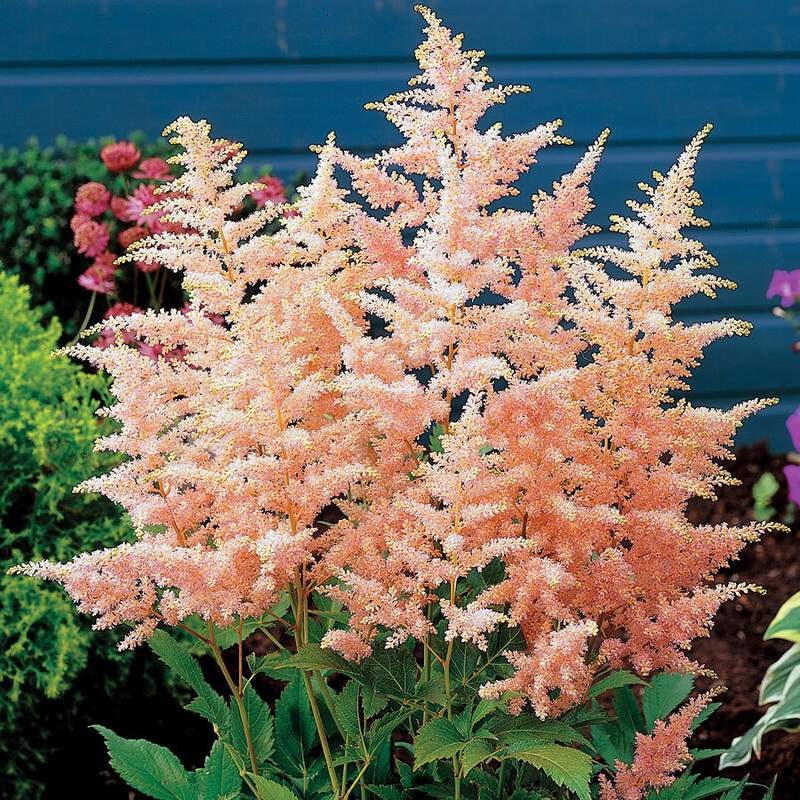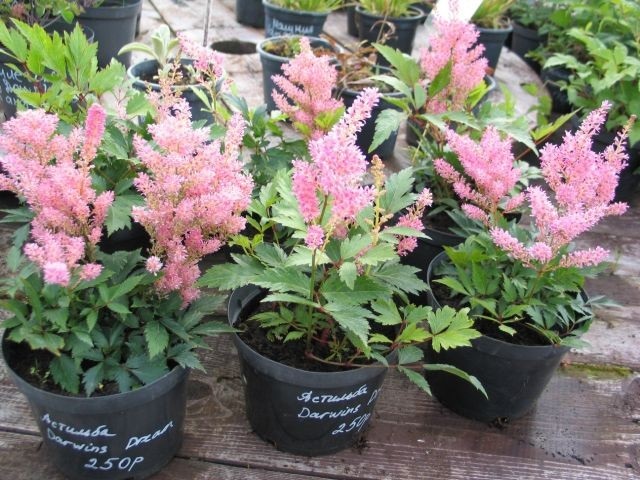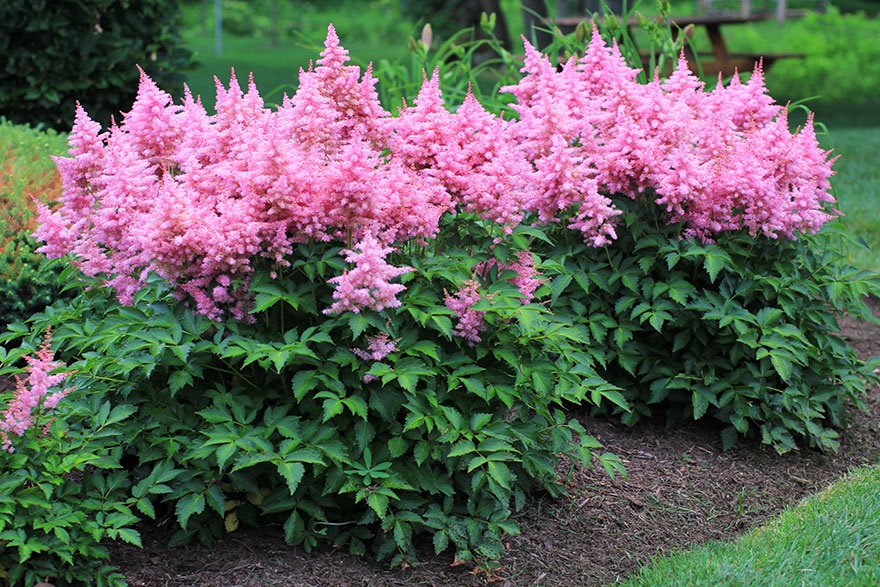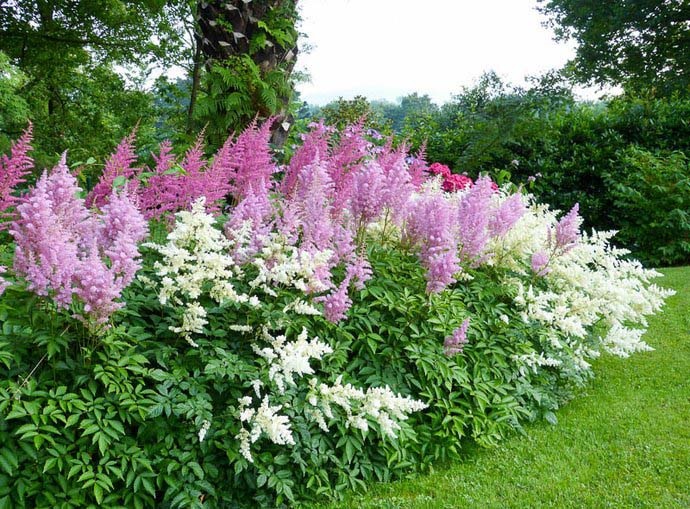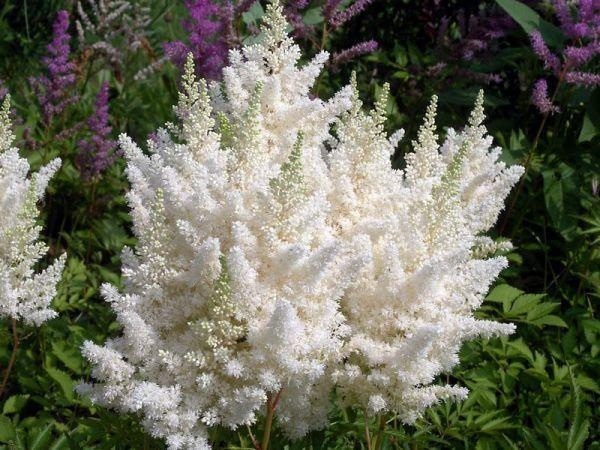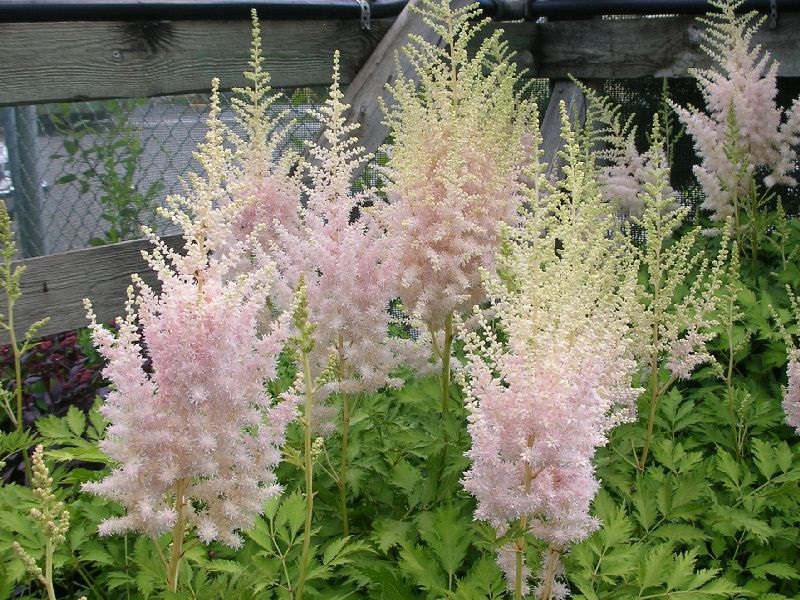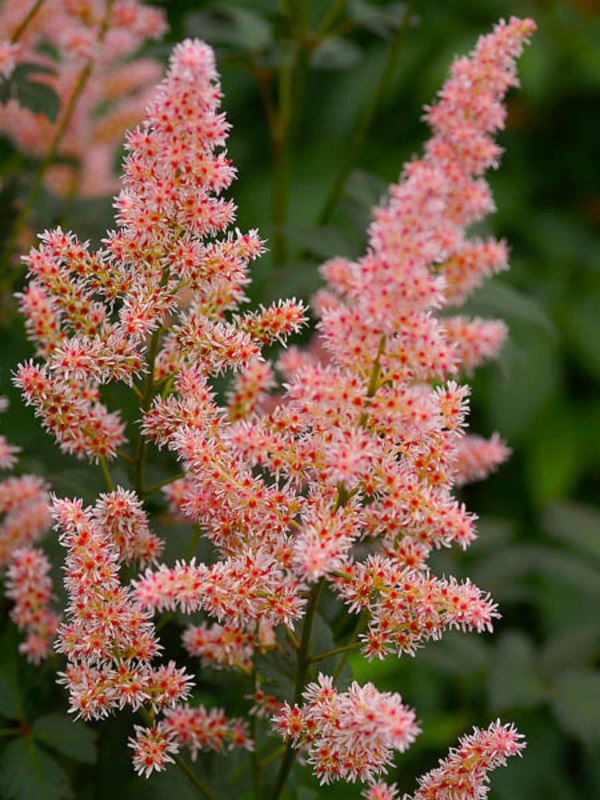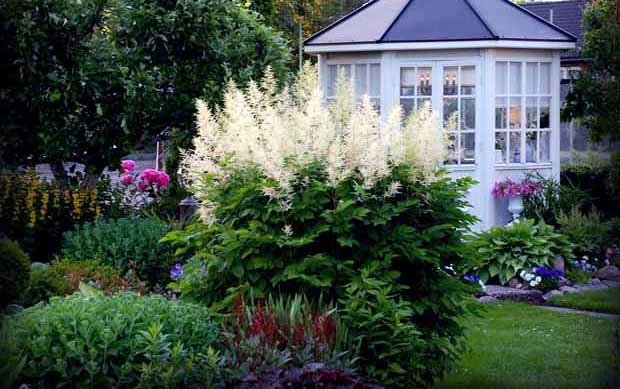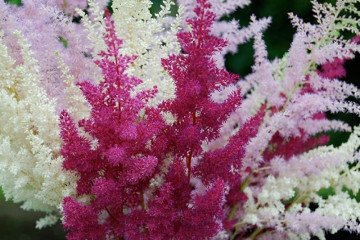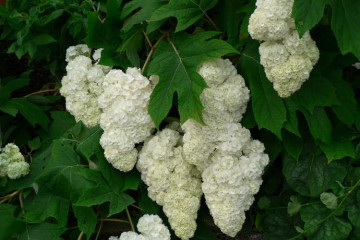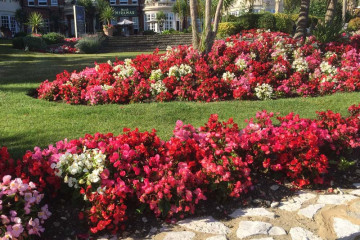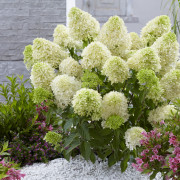The most beautiful varieties of astilba
Content:
Astilba is an ornamental plant that has long been used in landscape design. This flower is great for growing in summer cottages and backyards, in parks and gardens, as well as in indoor pots. Up to 40 species of shrubs grow in nature. They can be found in North America, Japan, East Asia and the Far East region of Russia. It usually grows where the soil is moist: along the banks of streams, rivers and lakes, in forests. From only 10 original specimens, breeders bred 200 decorative varieties, which today have become an adornment of any site.
general information
Astilba is appreciated for its beauty during and after flowering. Each new variety has its own distinctive characteristics. Shrubs amaze with a variety of colors in shape and color. All shades of red, lilac, violet, salmon, pale pink and dazzling white are found. Inflorescences are pyramidal, drooping, paniculate and rhombic. There are perennial or annual astilbe, differing in height and flowering time. Not all varieties of these luxurious flowers are used in the design of sites or parks, only about 30. The most popular groups are: Japanese, Chinese, curly, simple-leaved, as well as hybrid Arends, Lemoine, Thunberg.
So the flower would have remained in oblivion, because it was grown only for cutting into bouquets. But the French botanist-breeder Victor Lemoine drew attention to the perennial, appreciating its natural merits. He first bred ornamental varieties of this plant. The work on the selection of the species, which became a matter of his entire life, was continued by Georg Arends, a scientist from Germany. In his greenhouse, 84 varieties of garden astilba were bred, many of which have received gold medals at exhibitions more than once. The further fate of the decorative oriental shrub is a real drama. They forgot about him for a long time. Only in the 60s of the 20th century, breeders from the Netherlands and Latvia gave astilbe a second life. They resumed research work on the creation of new garden plant varieties.
Japanese Astilba Peach Blossom
The decorative perennial Astilba Japanese Peach Blossom grows up to 60-80 cm in height. The delicate pink paniculate inflorescences of the beauty from Japan bloom in June and bloom for four whole weeks. Its unusual reddish or red leaves are distinguished by carved fringes on the sides. Pink inflorescences of Peach Blossom have a peach shade. A feature of the Japanese astilba is a very lush flowering before withering. But Peach Blossom won't have a lot of flowers if it grows in the shade.
Astilba Darwin's Dream
This plant belongs to a hybrid group of 40 varieties by Georg Arends. Grows on fertile loams. A beautiful shrub with paniculate inflorescences of different colors (white, purple, pink, red) blooms in July-August. The plant fits perfectly into group plantings, especially against the background of conifers. Instances planted alone are no less spectacular.Astilba darwin's dream has strong roots growing close to the surface of the earth. Loves moist soil and good partial shade, so it will bloom even on the northern side of the site.
Astilba Vision in Pink
Hybrid plant bred in the Netherlands. It belongs to the Vision group of varieties. Astilba vision in pink grows up to half a meter during the flowering period. Blue or green leaves appear in mid-April. The buds bloom in late June - early July and bloom until the end of August. It got its name due to the rich pink color of the inflorescences. Delicate fluffy panicles of Astilba in pink firmly hold on high stems. Shrubs are beautiful even after flowering. Propagated by dividing the roots after 3 years.
Astilba Milk and Honey
Perennial Chinese shrub milk and honey astilba of small stature, together with inflorescences grows up to 40-60 cm. Like all flowers of this family, it loves moist fertile soil, but is more thermophilic and tolerant to drought than its "sisters". Therefore, you need to plant it on the sunny side. Firmly endures frost.
Leaves grow densely on the stems. Young foliage has a noticeable silvery pattern, repeating the veins, which gradually turns green. In the phase of active flowering, milk and honey astilbe dissolves white inflorescences with candles, which turn pink by the end of summer.
Astilba Superba
A perennial from China grows up to 1 m in height. An adult plant has powerful, cords-like rhizomes and a straight, strong stem with a lush crown of greenery. Inflorescences of pink, lilac and lilac color open at the end of August and bloom until mid-September. Astilba superba hybrid grows well on fertilized moist soils. He needs a light shade, because in direct sunlight, the flowers become pale.
Astilba Younique Carmine
Astilba is a hybrid variety, Unique Carmine, bred in Holland. The compactness and decorativeness of a bush no more than 50 cm high allows it to be used for planting in a group - 4-5 species of one variety. Even more interesting will look like a carmine flower planted in the vicinity of other plants. Younique carmine astilba seedlings can be planted in any month of spring and summer.
Carmine astilba bloom lasts two months. The inflorescences cover the bush with such a dense carpet that the effect of an airy bright red, pink, purple or white cloud is created, depending on the type of flower. Green leaves with jagged edges wrap the stems densely. The roots of the plant grow in a special way, growing not into the depths, but up the ground. Therefore, by winter they need to be well sprinkled with earth and insulated. Rhizomes can be separated and planted in 4-5 years in early spring. The distance between astilbe plants should be at least 35 cm. Decorativeness and small growth allow you to grow a miniature flower in pots on the window.
Astilba Cappuccino
This hybrid variety is an excellent example of painstaking work of breeders. Astilba Cappuccino flower is so beautiful that when you look at it, you get a feeling of lightness and airiness. Against the background of dark green leaves, groups of inflorescences, collected in a bouquet, rise. This specimen is so vulnerable that it is impossible to plant it in areas open to the sun - delicate greens quickly curl up and dry up, receiving burns. Flowers also wither and dry under the hot rays.
But the plant does not welcome a deep shadow either - it begins to lag behind in growth. It is very demanding for timely watering and feeding. In describing the advantages of Astilba Cappuccino, it should be noted that it grows well on any soil. In short, beauty requires attention and proper care.
Astilba Maggie Daly
Like another tribe from China, Astilba Superba, Maggie Daly also opens her buds late, only at the end of summer, and finishes flowering in the fall. Ornamental shrubs 50-60 cm high are covered with dark green leaves. The plant is crowned with crimson or pink inflorescences. Astilba should be planted by Maggie Daly on moist soil of a light structure. The hybrid grows and throws out color only in places where there is an openwork shadow. Does not like direct hits of hot rays.
Astilba Hip Hop
This variety has an unusual color of flowers - pink and red on one copy. It begins to bloom in mid-spring, in May. This unique plant easily tolerates heat and forty-degree frosts. But it is moisture-loving, so it requires regular watering.
Astilba Hip Hop gets along well in a flowerbed with such "neighbors" as phlox and carnations. The astilbe flower with roses looks great. The bush also looks impressive in solo design, especially if bushes or conifers grow in the background.
Astilba Delft Lace
This selection appeared thanks to the works of the German botanist Georg Arends. On his account there are many cultivated species. This rather large (up to 80 cm in height and 50 cm in width) ornamental shrub is characterized by low maintenance requirements. The main thing for him is not to overdry the soil and at the same time to prevent moisture stagnation. Then the plant will delight all summer with bright pink colors and a delicate scent of flowers, which attracts clouds of butterflies and bees.
Most of all, the shrub amazes with its leaves, which gradually change their color: in spring they are burgundy, in summer they are green, and by autumn they become blue. Delft is the first capital of the Netherlands. Astilba Delft Lace (or Delphic lace) got this name due to the carved shape of the leaves.
Tall shrubs are hardy and are not afraid of strong, up to - 35 degrees, frosts. In the description of the agrotechnical features of the Astilba Delft Lace plant, it can be added that it blooms for a long time in areas with high groundwater.
Astilba and Volzhanka
Astilba and Volzhanka characteristic differences:
- color: Volzhanka has only white, Astilba has a variety of colors (from white to lilac);
- the shape of the inflorescences in the Volzhanka - only drooping panicles, in the astilbe there are also rhombic, pyramidal and paniculate;
- height - aruncus grows up to 2 meters, the highest astilbe is not higher than 1 m.
- Volzhanka belongs to the Rosaceae family, astilba belongs to the Kamnelomkovs.
The history of the name of the Volzhanka is interesting. Previously, this plant, similar to the astilba bush, was called "goat's beard." Botanical scientist Karl Linnaeus changed its name to "aruncus", but retained the old meaning. "Arynkos" is translated from Greek as "goat's beard".
Very often, beginners and professional gardeners have a question: "Is Astilba poisonous or not?" The question is fair, because the plant comes from the East, which means it is exotic. The answer is simple: "No." Moreover, its herb is used to treat certain skin diseases, and decoctions of the roots are used for snake bites.
Not all of the most beautiful varieties of astilba are described in this article. To create unusual landscape compositions, you can use not only medium, but tall shrubs to build multi-tiered flower beds.Miniature curly varieties Lilliput and Perkeo, which can be placed on the lowest tier, will be a great addition. It all depends on the designer's idea. Astilba is not only a not spoiled plant, but also perfectly adapted to various agricultural and climatic conditions. This means that it is convenient and easy to grow it in different sites and areas.

